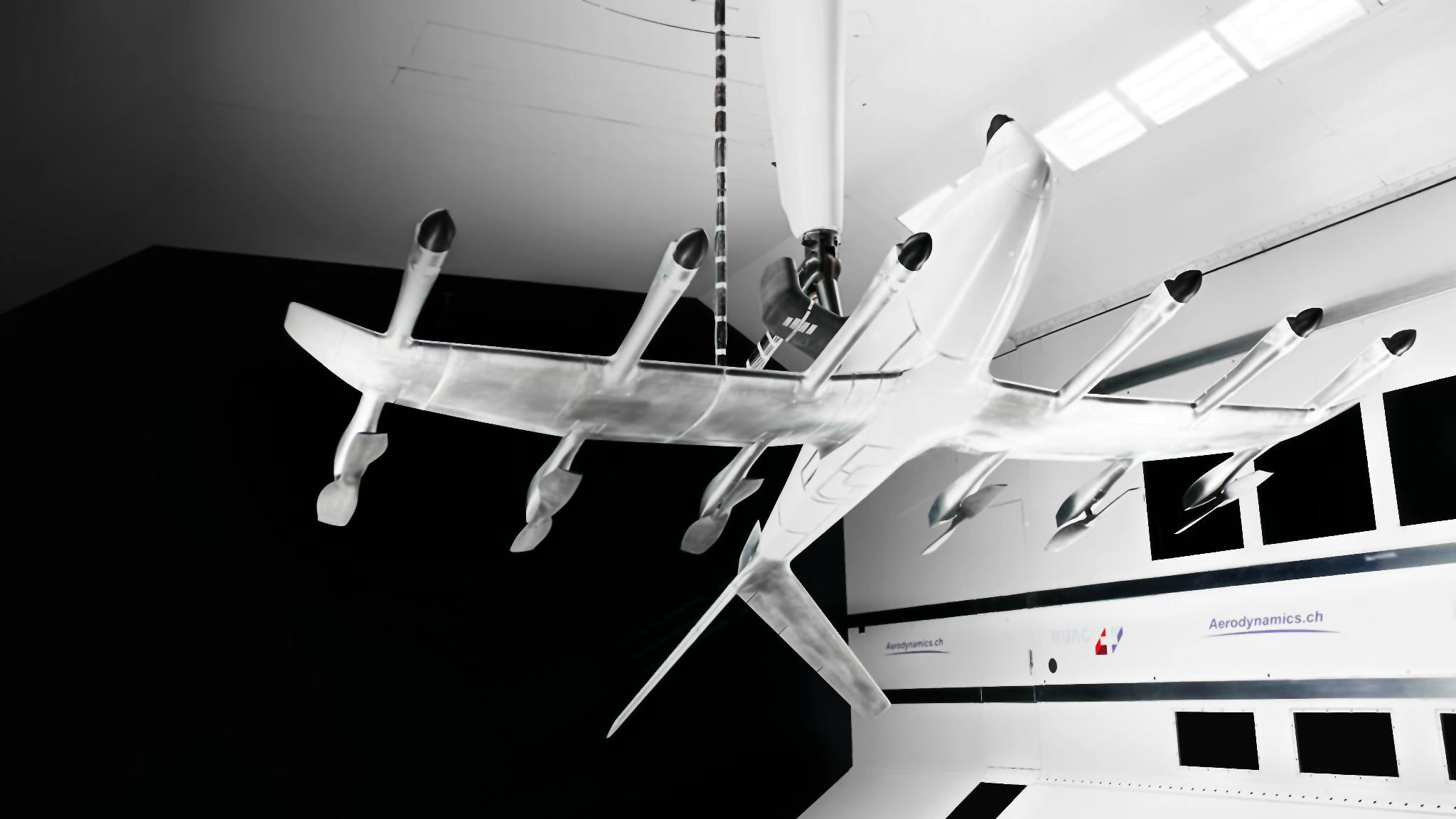
Written by: Bruno Bachinger - Director, Flight Sciences, Giovanni Droandi - Manager, Aerodynamics, and Mike Kerho - Senior Aerodynamics Test Engineer
Archer recently completed a six-week long wind tunnel test campaign of the Midnight aircraft configuration at the RUAG Large Subsonic Wind Tunnel in Emmen, Switzerland. This campaign follows on to previous campaigns we’ve carried out at Politecnico di Milan (propeller performance and propeller airframe interactions), University of Florida (acoustic toolchain validation) and the University of Notre Dame (wing, tail and propeller airfoil performance validation). This test at RUAG allowed us to gather valuable data to further validate the Midnight vehicle configuration, its aerodynamic models, external load predictions, aircraft performance, stability and control characteristics, and performance degradation in icing conditions - keeping us on pace for Midnight's upcoming flight test program.
RUAG runs one of the largest and most capable wind tunnels in the world. They also have extensive testing experience that is trusted by the aerospace industry globally, making RUAG an ideal partner for this important campaign. DeHarde, a German company known for its high-quality, precision wind tunnel models, designed and fabricated the 27.6% scale, unpowered model of Midnight for this test campaign that features a wingspan of over 13 feet. This size was chosen very intentionally--to maximize test data similitude and correlation to full-scale, while fitting within the 5m x 7m test section. The model was unpowered, meaning the propellers did not spin during testing, to allow focus on the aerodynamics of the airframe.
The purpose of this test campaign was to develop a comprehensive dataset to validate our engineering design tools and to confirm the aerodynamic predictions of our Midnight design. Overall, 878 measurement sweeps were made by varying model angle of attack and sideslip and capturing force and moment trends for over 400 different model configurations. These model changes included varying control surface deflections, adjusting forward boom tilt angles, and stepping through an airframe component build-up. This build-up started with a bare wing/fuselage and then successively added booms, landing gear, tail, and stopped lifter propellers. This build-up approach allowed us to investigate and clearly understand the incremental effects of each airframe component.
Specific emphasis was placed on collecting data to validate our state-of-the-art computational fluid dynamics (CFD) predictions of the overall Midnight aircraft performance in cruise, including vehicle drag by airframe component, high-lift capability, and stall speeds. Of particular interest was exploring those conditions where airflows are unsteady and difficult to predict analytically with high accuracy. We collected extensive data on vehicle stability and control derivatives, which relate changes in forces and moments with aircraft states (e.g., angle of attack or sideslip) and control inputs (e.g., control surface deflections). This data validates the cruise stability characteristics of Midnight and is a major input to the design of the airplane’s control logic and anchors flight simulation models to accurately represent the true airplane’s behavior. Finally, data necessary to correlate and substantiate external loads predictions were collected and will be used to validate the loads that size the aircraft structure.
This wind tunnel test represents a significant risk-reduction and validation milestone for Archer. The results further reinforce our confidence in the capability and performance of the Midnight design. For example, cruise drag predictions trend extremely well with test data, which in turn further validates our confidence in Midnight’s range. The maximum lift capability of the aircraft even came in slightly better than we predicted, which assures us that we’ve correctly set the stall and approach speeds for the airplane. The measured stability characteristics reinforce that the V-tail, flaperons and ruddervators are correctly sized and that they have adequate aerodynamic control power, while also confirming that control surface hinge moments meet requirements and that our actuators are properly sized. Testing for simulated ice accretion has given the team a good understanding of the speed additives necessary to protect the aircraft from performance degradations that we would expect to see during an inadvertent icing encounter.
In summary, this latest wind tunnel test campaign was a huge success, further validating our models and predictions about the Midnight vehicle configuration and expected performance. All together, these learnings, and those still being mined from the rich dataset we collected, allow us to take a significant step forward in the development and certification of Midnight. The next step is an upcoming wind tunnel test that will investigate the effects of the propulsion system on aerodynamic performance as we remain on pace for Midnight's upcoming flight test program. Stay tuned!

